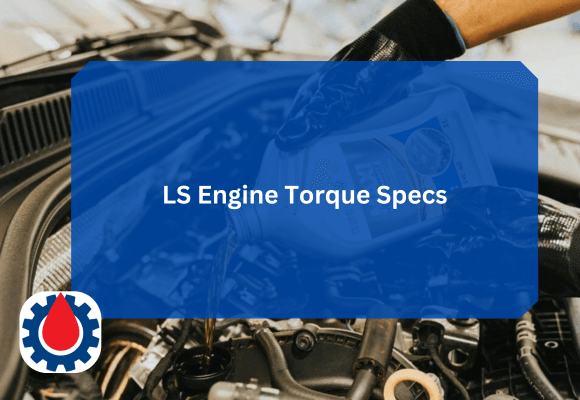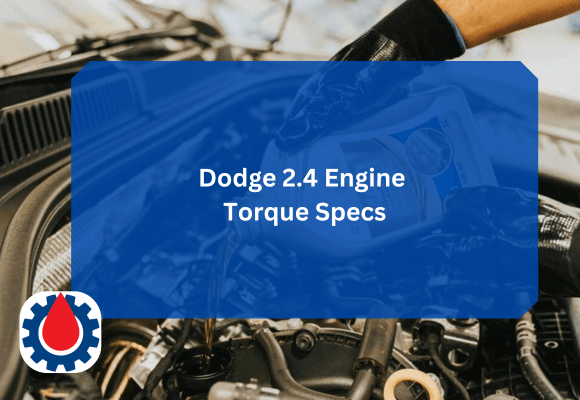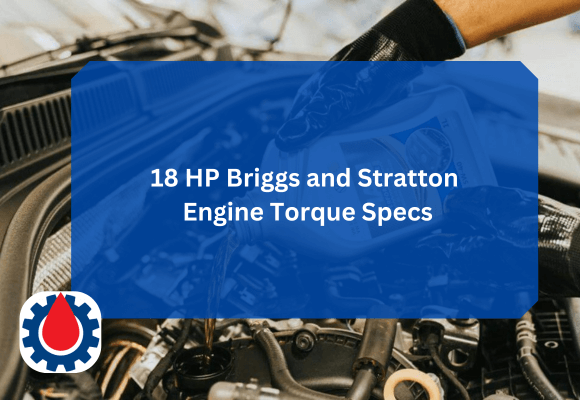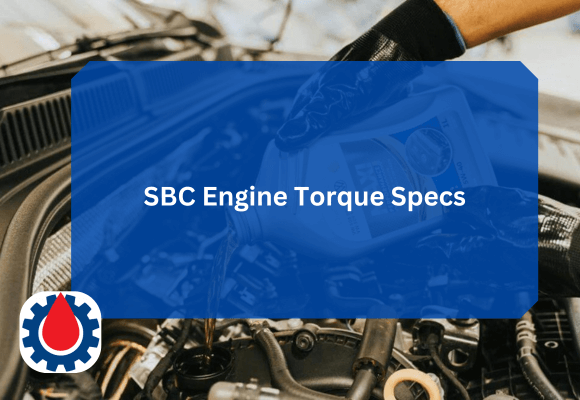Correct torque ensures proper clamping force, prevents leaks, avoids part failure, and helps the engine operate efficiently under load.
This guide breaks down all essential LS engine torque specifications, including head bolts, main caps, rod bolts, rocker arms, intake, exhaust, flywheel, balancer, and more.
LS Engine Torque Specs
| Component | Torque Spec |
|---|---|
| Main Cap Bolts (Inner) | 15 ft-lbs + 80° |
| Main Cap Bolts (Outer) | 15 ft-lbs + 53° |
| Side Bolts | 20 ft-lbs |
| Rod Bolts (Factory) | 15 ft-lbs + 75° |
| Rod Bolts (ARP) | 45–50 ft-lbs (check ARP card) |
| Cylinder Head Bolts (Short) | 22 ft-lbs + 90° |
| Cylinder Head Bolts (Medium) | 22 ft-lbs + 90° |
| Cylinder Head Bolts (Long) | 22 ft-lbs + 90° + 70° |
| Rocker Arm Bolts | 22 ft-lbs |
| Intake Manifold Bolts | 44 in-lbs → 89 in-lbs |
| Exhaust Manifold Bolts | 18 ft-lbs |
| Exhaust Manifold Heat Shield Bolts | 89 in-lbs |
| Spark Plugs | 11 ft-lbs |
| Oil Pan Bolts (M8) | 18 ft-lbs |
| Oil Pan Bolts (M6) | 106 in-lbs |
| Oil Pickup Tube Bolt | 18 ft-lbs |
| Oil Pump Bolts | 18 ft-lbs |
| Oil Pump Cover Bolts | 97 in-lbs |
| Balancer (Crank) Bolt | 37 ft-lbs + 140° |
| Flywheel/Flexplate Bolts | 74 ft-lbs |
| Camshaft Retainer Plate Bolts | 18 ft-lbs |
| Timing Cover Bolts | 18 ft-lbs |
| Timing Cover (Small) Bolts | 106 in-lbs |
| Timing Chain Dampener Bolts | 18 ft-lbs |
| Water Pump Bolts | 22 ft-lbs |
| Thermostat Housing Bolts | 18 ft-lbs |
| Valve Cover Bolts | 89 in-lbs |
| Coil Bracket Bolts | 89 in-lbs |
| Throttle Body Bolts | 89 in-lbs |
| MAP Sensor Bolt | 89 in-lbs |
| Fuel Rail Bolts | 89 in-lbs |
| Injector Retainer Bolts | 89 in-lbs |
| Knock Sensor Bolts | 15 ft-lbs |
| Crankshaft Position Sensor Bolt | 18 ft-lbs |
| Camshaft Position Sensor Bolt | 106 in-lbs |
| Starter Bolts | 37 ft-lbs |
| Bellhousing Bolts | 37 ft-lbs |
| Torque Converter Bolts | 46 ft-lbs |
| Engine Mount to Block Bolts | 37 ft-lbs |
| Engine Mount Through-Bolt | 74 ft-lbs |
| Accessory Bracket Bolts | 37 ft-lbs |
| Alternator Bolts | 37 ft-lbs |
| Power Steering Pump Bolts | 18 ft-lbs |
| A/C Compressor Bolts | 37 ft-lbs |
| Harmonic Balancer Puller/Installer Bolts | 28 ft-lbs |
| Rear Cover Bolts (Large) | 18 ft-lbs |
| Rear Cover Bolts (Small) | 106 in-lbs |
| Rear Main Seal Housing Bolts | 18 ft-lbs |
| Oil Cooler Line Fittings | 18 ft-lbs |
| Coolant Temp Sensor | 15 ft-lbs |
| EGR Valve Bolts (if equipped) | 18 ft-lbs |
| PCV Valve Adapter Bolts | 89 in-lbs |
| O2 Sensor | 30 ft-lbs |
| Transmission-to-Engine Bolts | 35–40 ft-lbs |
Related 5.3 LS Engine Torque Specs(For All Components)
Understanding LS Torque-to-Yield (TTY) Bolts
Many LS fasteners, especially head bolts, main bolts, and rod bolts, are torque-to-yield, meaning they stretch once torqued to spec. This provides better clamping force, but TTY bolts cannot be reused.
You must always use new:
- Head bolts
- Rod bolts (factory)
- Main cap bolts
- Crank balancer bolt
If you are repeatedly assembling an engine (racing, blueprinting), switching to ARP reusable bolts is recommended.
LS Head Bolt Torque Specs
LS heads use a three-step torque process:
1. Initial pass:
Torque all long, medium, and short bolts to 22 ft-lbs in sequence.
2. Second pass:
Turn all long and medium bolts 90°.
3. Final pass:
- Long bolts: additional 70°
- Medium bolts: no extra turn
- Short bolts: no extra turn
This torque-angle method ensures even clamping across aluminum LS heads and composite gaskets.
Related Dodge 2.4 Engine Torque Specs(For All Components)
LS Main Cap Torque Specs
LS main caps use a six-bolt setup for rigidity. The torque steps are:
Inner Main Bolts:
- 15 ft-lbs + 80°
Outer Main Bolts:
- 15 ft-lbs + 53°
Side Bolts:
- 20 ft-lbs
This gives the LS bottom end its legendary durability, especially under boost or high RPM.
LS Rod Bolt Torque Specs
Factory LS connecting rod bolts are torque-to-yield:
- 15 ft-lbs + 75°
If you’re using ARP bolts, use the spec on the ARP card—usually:
- 45–50 ft-lbs with ARP moly lube
Aftermarket rod bolts eliminate the need for torque angle and offer more consistent clamping.
LS Rocker Arm Torque Specs
All LS engines use pedestal-mount rockers. Their torque is:
- 22 ft-lbs
Make sure the engine is at TDC for each cylinder during installation to avoid valve spring pressure binding.
Related Oil Drain Plug Torque Chart(For ALL Car Models)
LS Intake Manifold Torque Specs
Composite LS intakes are delicate and require a two-step, low-pressure torque sequence.
- 44 in-lbs, then
- 89 in-lbs final torque
Always follow the center-out star pattern to prevent cracks or air leaks.
LS Exhaust Manifold Torque Specs
Exhaust bolts face extreme heat cycles:
- 18 ft-lbs
Stainless or aftermarket headers may require a re-check after the first heat cycle.
LS Crank Balancer Bolt Torque
The harmonic balancer bolt is torque-to-yield:
- 37 ft-lbs + 140°
An impact gun cannot achieve the final torque correctly, so always turn the angle manually. Avoid reusing the bolt.
LS Flexplate/Flywheel Bolt Torque
Regardless of the LS automatic or manual configuration:
- 74 ft-lbs
For boosted or high-RPM builds, many tuners upgrade to ARP hardware.
LS Oil Pump Torque Specs
Oil pump bolts:
- 18 ft-lbs
Ensure the pump is properly aligned over the crankshaft to avoid premature wear.
Related SBC Engine Torque Specs(For All Components)
Why Accurate LS Torque Specs Matter
The LS engine platform relies heavily on aluminum components and torque-to-yield hardware. Under-torquing can cause:
- Head gasket leaks
- Rod bearing failure
- Main bearing misalignment
- Accessory and intake vacuum leaks
- Flywheel loosening
- Oil pump misalignment
Over-torquing is worse, it can crack aluminum blocks, distort main caps, and stretch bolts beyond safe limits.
Always use:
- A calibrated torque wrench
- A torque angle gauge
- New TTY bolts
- Proper lubrication per GM or ARP instructions
This is especially critical on LS2, LS3, LS7, and LQ4/LQ9 truck engines, where factory tolerances are tight.
FAQs
What is the torque rating of a 5.3 LS?
A standard 5.3L LS engine (such as the LM7, L59, or L33) produces 305–335 lb-ft of torque, depending on model year and configuration. The aluminum L33 variant is near the top of this range due to its higher compression ratio.
How much torque does an LS1 engine have?
The LS1 typically produces 335–350 lb-ft of torque, with slight variations based on vehicle application (Corvette, Camaro, or GTO) and tuning differences across the years.
What are the specs of an LS engine?
Most LS engines share the following specs:
- V8 configuration, 90° block
- Pushrod architecture with a single camshaft
- Displacement range: 4.8L to 7.0L
- Aluminum or iron block, depending on the model
- 6-bolt main bearing caps for strength
- Torque output: 285–470+ lb-ft depending on engine variant
- Horsepower: 270–505+ hp depending on model
The LS family is known for durability, aftermarket support, and excellent power-to-weight ratio.
Is a 5.3 a LS1 or LS2?
A 5.3L engine is neither LS1 nor LS2.
It belongs to the Gen 3 and Gen 4 LS-based truck engine family, not the performance-car LS series. The 5.3L engines (LM7, L59, L33, LC9, LY5, etc.) share architecture with LS engines but are technically Vortec/LS-based truck engines, not LS1 or LS2.
What is the difference between a 5.3 LS and a 5.7 LS?
The main differences are:
- Displacement: 5.3L = 325 cu in, 5.7L = 346 cu in
- Power: 5.7 LS1 engines make more horsepower and torque
- Application: 5.3s are truck/SUV engines; 5.7 LS1 is a performance car engine
- Compression: LS1 typically has higher compression
- Block material: Many 5.3s are iron block; LS1 is aluminum
- Airflow: LS1 heads flow better than most 5.3 truck heads
Overall, the 5.7 LS1 is a performance upgrade over a 5.3.
How much HP can a 5.3 LS block handle?
A stock 5.3 iron block (LM7/L59/LY5) can reliably handle 700–1,000 horsepower with proper fueling and tuning. The aluminum 5.3 blocks (L33/LS4) typically handle 550–700 horsepower safely. With forged internals and upgraded head studs, even higher levels are possible.
How much torque does a LS2 have?
The LS2 engine produces 400 lb-ft of torque, regardless of whether it’s installed in a Corvette, GTO, or Trailblazer SS. Variations may occur slightly due to exhaust and tuning, but 400 lb-ft is the standard factory rating.
Final Thoughts
LS engine torque specs are essential for a successful build. Whether you’re assembling a stock LS1 or preparing an LQ9 for boost, proper torque ensures the engine stays reliable, powerful, and leak-free. Use new torque-to-yield bolts, follow the sequences carefully, and always double-check your torque values before final assembly.
With the correct torque specs and careful attention to detail, your LS engine will deliver the performance and durability these engines are known for.




